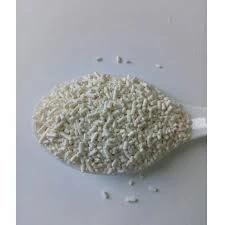
Flour Treatment Agents and Their Impact on Baking Quality and Performance
Understanding Flour Treatment Agents Enhancing Quality and Performance
Flour treatment agents, also known as flour conditioners or flour improvers, play a crucial role in the milling and baking industries. These substances are added to flour to enhance its performance, improve the quality of the baked product, and ensure consistency in the final results. The use of flour treatment agents has become increasingly popular among bakers and food manufacturers as they seek to deliver high-quality baked goods that meet consumer expectations.
What Are Flour Treatment Agents?
Flour treatment agents encompass a variety of substances that modify the properties of flour during the baking process. Common agents include oxidizing agents, reducing agents, enzymes, and emulsifiers. Each type serves a distinct purpose, whether it’s enhancing the strength of gluten, improving dough stability, or affecting the fermentation process.
1. Oxidizing Agents These include ascorbic acid (vitamin C), potassium bromate, and potassium iodate. Oxidizing agents improve the strength and elasticity of dough by promoting the formation of disulfide bonds between gluten strands. This results in better dough structure and improved gas retention, leading to a higher loaf volume.
2. Reducing Agents Unlike oxidizing agents, reducing agents like cysteine and glutathione work to break down gluten proteins. This can be particularly useful in specific formulations, allowing bakers to create softer textures that are desirable in certain products, such as cake or pastry.
3. Enzymes Enzymatic flour treatment involves the addition of specific enzymes like amylases and proteases. Amylases break down starch into sugars that yeast can ferment, while proteases help in tenderizing the dough by breaking down gluten.
flour treatment agent

4. Emulsifiers These agents improve the mixing of ingredients and enhance dough stability. Lecithin and mono- and diglycerides are common examples that help maintain moisture in baked goods, thereby extending shelf life.
Benefits of Using Flour Treatment Agents
The use of flour treatment agents offers numerous benefits to both bakers and consumers. One of the primary advantages is the improvement of dough consistency, leading to more predictable baking outcomes. This is particularly important in commercial baking, where uniformity and reliability are essential for meeting production demands.
Moreover, flour treatment agents help to enhance the nutritional value of baked products. For instance, the addition of enzymes can increase the digestibility of flour and improve the bioavailability of nutrients, making the final product healthier for consumers.
Flour treatment agents also facilitate the adaptation of flour to different baking processes. For instance, high-extraction flours, which contain more bran and wheat germ, can be treated to yield products with textures similar to those made with white flour. This is particularly beneficial for health-conscious consumers seeking the nutritional benefits of whole grains without sacrificing quality.
Conclusion
In conclusion, flour treatment agents are vital in modern baking, providing bakers with the tools to improve dough performance and product quality. By understanding the various types of treatment agents and their functions, bakers can make informed decisions that enhance their products while meeting consumer demands for quality and nutrition. As the industry continues to evolve, the role of flour treatment agents will undoubtedly expand, paving the way for innovation in baking practices.
-
Aluminum Hydroxide: Quality Gels & Dried Gel AntacidNewsAug.31,2025
-
Buy High-Quality Trichloroisocyanuric Acid for Sale | TCCA 90% SupplierNewsAug.30,2025
-
Pure Sodium Dichloroisocyanurate Dihydrate | Powerful DisinfectantNewsAug.29,2025
-
Industrial Chemicals: Quality & Purity for Every IndustryNewsAug.28,2025
-
Nitrile Rubber Honoring Strict Production StandardsNewsAug.22,2025
-
Aspartame Ingredients Honoring Food Safety ValuesNewsAug.22,2025
-
Fertilizer for Balanced Plant NutritionNewsAug.22,2025
Hebei Tenger Chemical Technology Co., Ltd. focuses on the chemical industry and is committed to the export service of chemical raw materials.
-

view more DiethanolisopropanolamineIn the ever-growing field of chemical solutions, diethanolisopropanolamine (DEIPA) stands out as a versatile and important compound. Due to its unique chemical structure and properties, DEIPA is of interest to various industries including construction, personal care, and agriculture. -

view more TriisopropanolamineTriisopropanolamine (TIPA) alkanol amine substance, is a kind of alcohol amine compound with amino and alcohol hydroxyl, and because of its molecules contains both amino and hydroxyl. -

view more Tetramethyl Thiuram DisulfideTetramethyl thiuram disulfide, also known as TMTD, is a white to light-yellow powder with a distinct sulfur-like odor. It is soluble in organic solvents such as benzene, acetone, and ethyl acetate, making it highly versatile for use in different formulations. TMTD is known for its excellent vulcanization acceleration properties, which makes it a key ingredient in the production of rubber products. Additionally, it acts as an effective fungicide and bactericide, making it valuable in agricultural applications. Its high purity and stability ensure consistent performance, making it a preferred choice for manufacturers across various industries.





